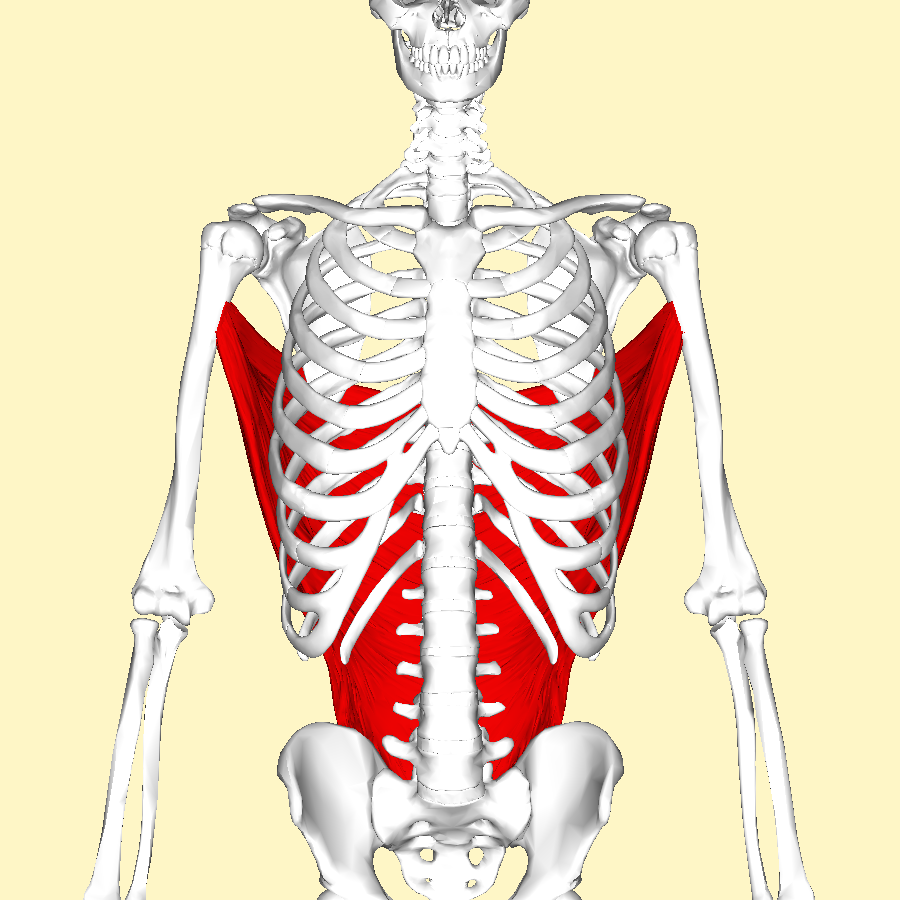
FileLatissimus dorsi muscle frontal2.png Wikimedia Commons
The latissimus dorsi muscle is a large flat muscle in the lower thorax. Its origin is mainly from the vertebral processes of spinal levels T7-L5, and it inserts at the humerus to adduct, extend, and internally rotate the shoulder and arm. It also plays a role in the extension and flexion of the lumbar spine and in respiratory functions such as.

Latissimus dorsi muscle wikidoc
The latissimus dorsi ( / ləˈtɪsɪməs ˈdɔːrsaɪ /) is a large, flat muscle on the back that stretches to the sides, behind the arm, and is partly covered by the trapezius on the back near the midline. The word latissimus dorsi (plural: latissimi dorsi) comes from Latin and means "broadest [muscle] of the back", from "latissimus" ( Latin.
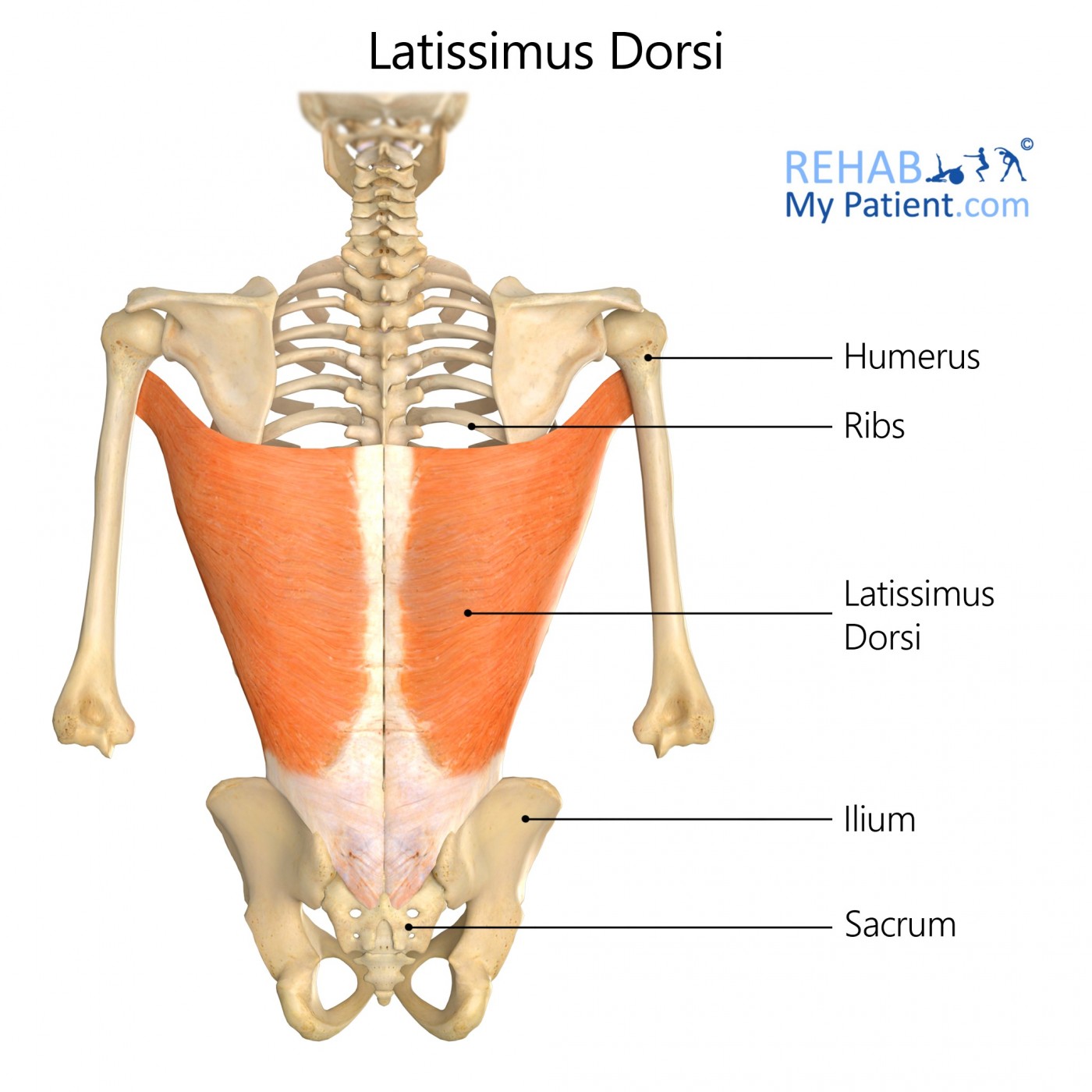
latissimus dorsi muscle
The latissimus dorsi muscle is a broad, flat muscle that occupies the majority of the lower posterior thorax.The muscle's primary function is of the upper extremity but is also considered to be a respiratory accessory muscle.. Along with the levator scapulae, trapezius and rhomboid muscles, the latissimus dorsi belongs to the superficial layer of the extrinsic back muscles.

Latissimus dorsi muscle Wikipedia
The latissimus dorsi muscle, named after the Latin term latus (wide) and dorsi (back), is a flat, wing-like muscle that stretches from its origins at the lower thoracic vertebrae, lower ribs, scapula and iliac crest and attaches or inserts at a groove in the bone of the upper arm (humerus). It allows us to extend, adduct, abduct (bring away.
/GettyImages-499158109-57a6c9ed5f9b58974ab33d7c.jpg)
Latissimus Dorsi Anatomy and Function
The latissiumus dorsi is an extrinsic muscle of the shoulder. Attachments: Originates from the spinous processes of T7-T12, iliac crest, thoracolumbar fascia and the inferior three ribs. The fibres converge into a tendon that attaches to the intertubercular sulcus of the humerus. Actions: Extension, adduction and medial rotation of the upper.

Latissimus dorsi the triangle muscle Different
Latissimus dorsi muscle (Musculus latissimus dorsi) The latissimus dorsi muscle (AKA: 'the lats muscle' or 'the lats') is the widest muscle in the human body. It is relatively thin and covers almost all back muscles at the posterior trunk, except the trapezius . Along with the levator scapulae, trapezius and rhomboid muscles, the latissimus.

Latissimus Dorsi Muscle of the Monday Balance Biomechanics
The latissimus dorsi is a large muscle that spans the majority of your back. Shaped like a fan, it's generally rarely injured, but when it is, it's due to working out or trauma.

Latissimus Dorsi Supply and Functions Earth's Lab
A person can make certain lifestyle changes to prevent latissimus dorsi pain. These include: using proper form during sports and exercise. avoiding overuse of the muscle. applying a heating pad to.
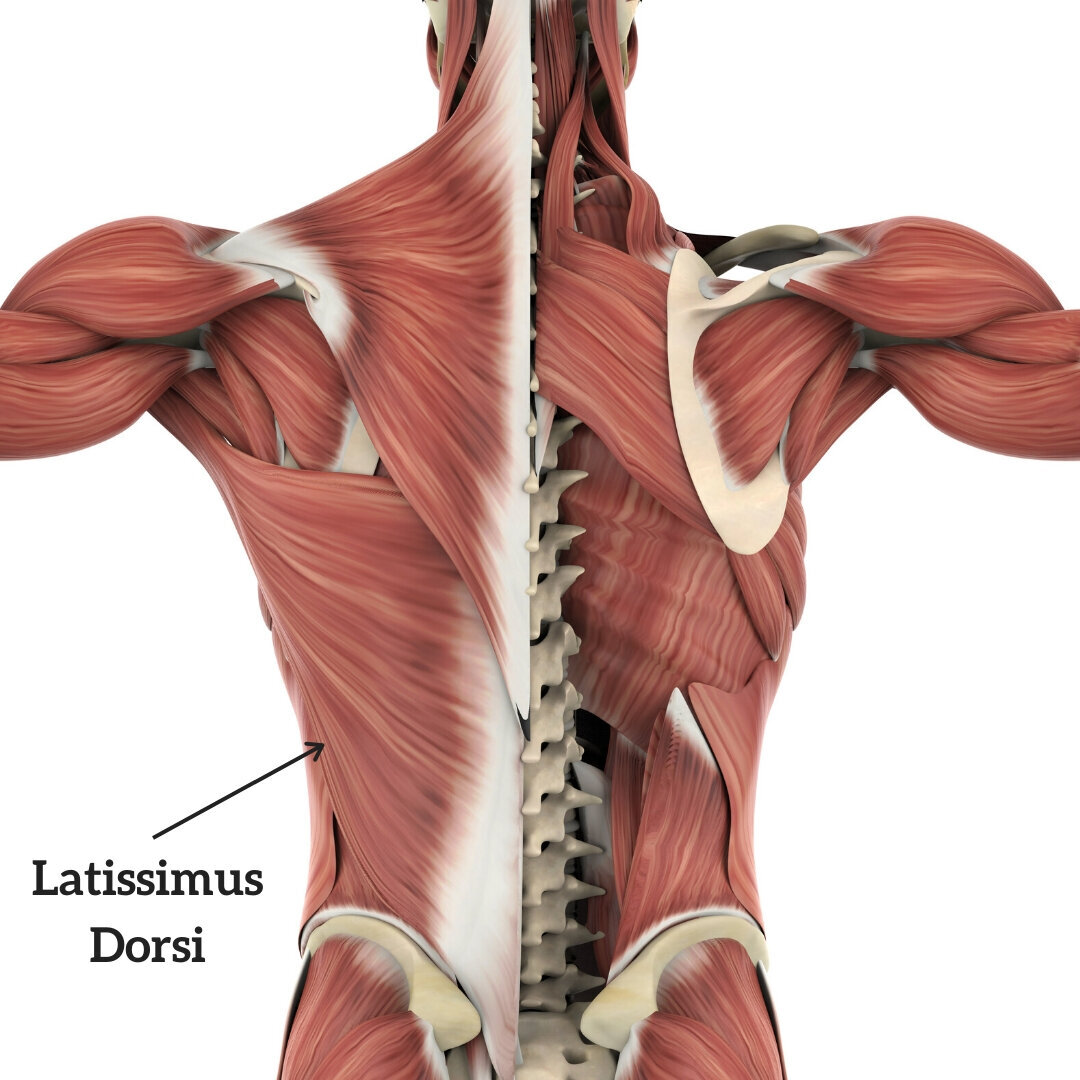
Muscle Breakdown Latissimus Dorsi
The latissimus dorsi muscle is a large sweeping muscle that connects the lower half of the body (pelvis) to the arm itself. Because of its many actions associated with movements of swimming, it's known as the swimmer's muscle. What does the latissimus dorsi muscle mean? The name of the latissimus dorsi muscle describes its size and location.
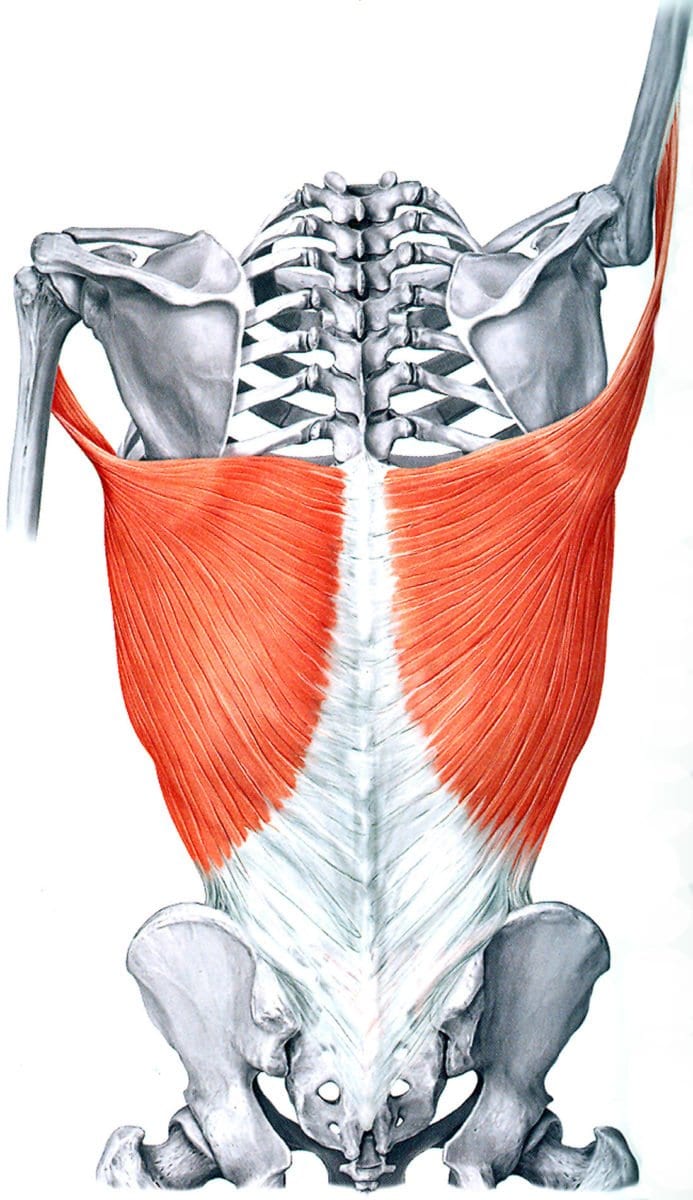
Latissimus Dorsi Learn Your Muscles Custom Pilates and Yoga
Description: The Latissimus dorsi is a triangular, flat muscle, which covers the lumbar region and the lower half of the thoracic region, and is gradually contracted into a narrow fasciculus at its insertion into the humerus. It arises by tendinous fibers from the spinous processes of the lower six thoracic vertebrae and from the posterior.
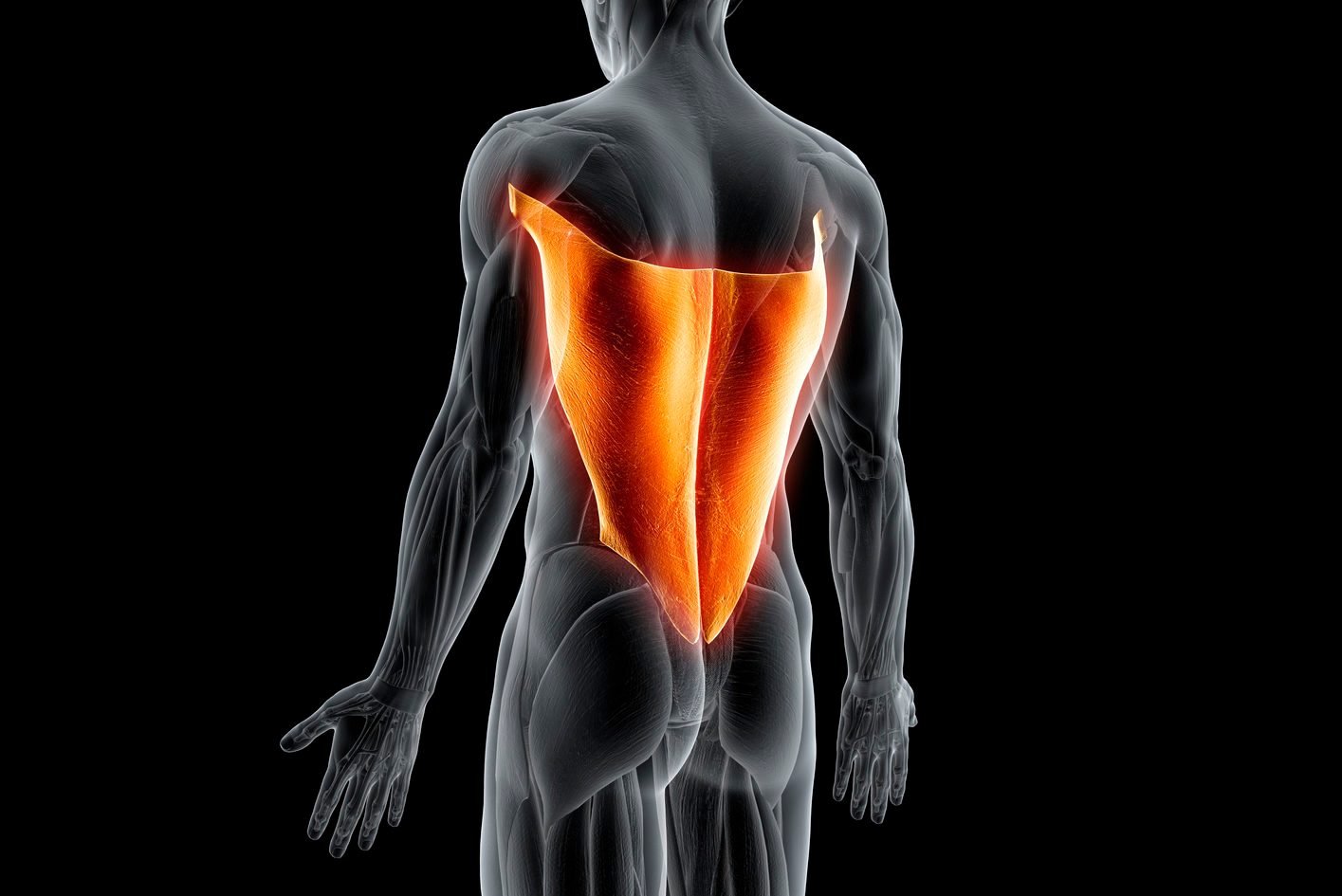
Latissimus Dorsi Pain 6 Causes and How to Treat Them The Healthy
The latissimus dorsi muscle is a large, triangularly shaped back muscle that helps you do things like pull-ups, swimming and even breathing. It functions to stabilize your back while extending your shoulders.The latissimus dorsi muscle is often called the "lats" or the latissimus for short. The lats are superficially located, which means they.
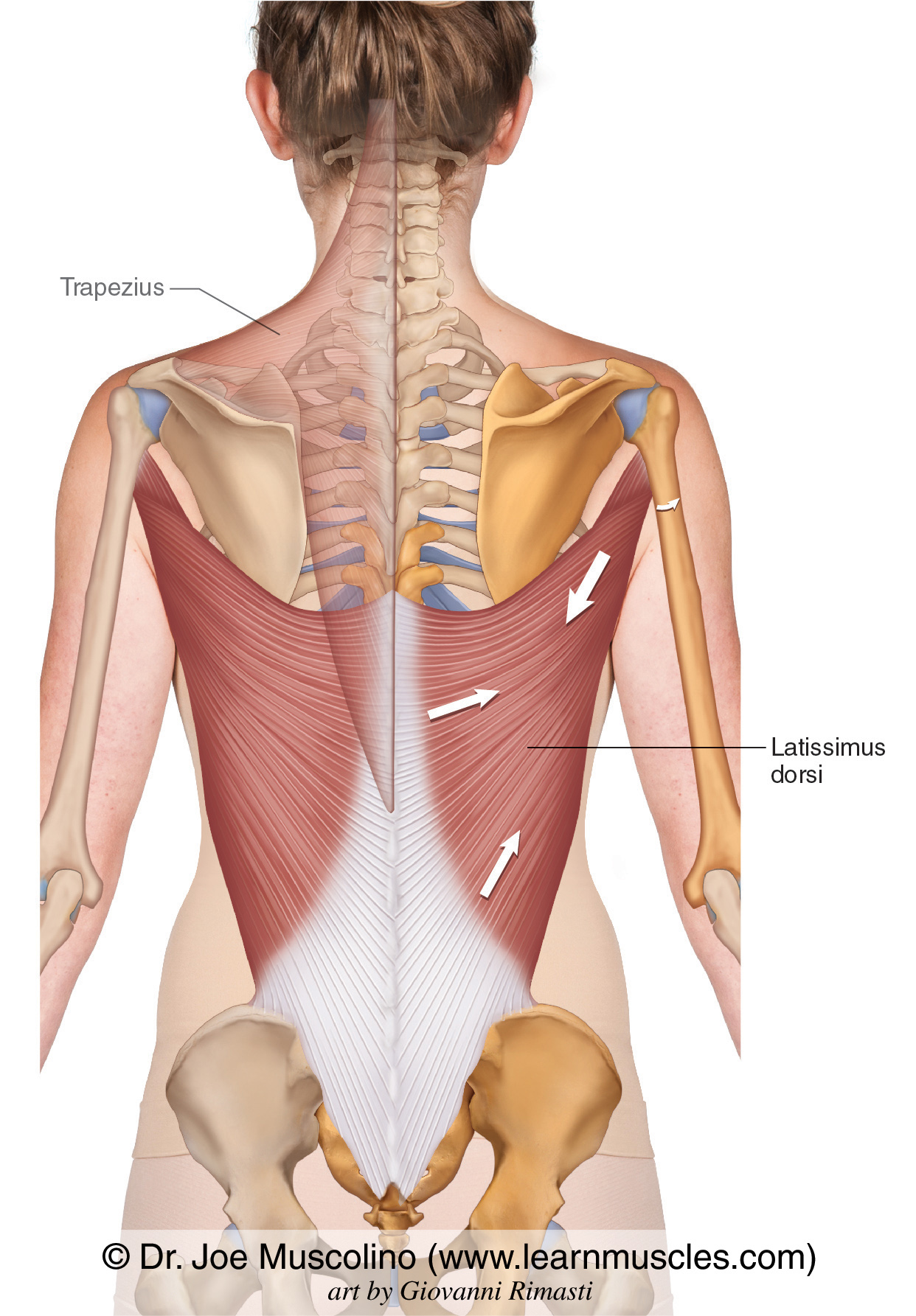
Latissimus Dorsi ("Lat") Learn Muscles
Latissimus dorsi, widest and most powerful muscle of the back. It is a large, flat, triangular muscle covering the lower back. It arises from the lower half of the vertebral column and iliac crest (hipbone) and tapers to a rounded tendon inserted at (attached to) the front of the upper part of the
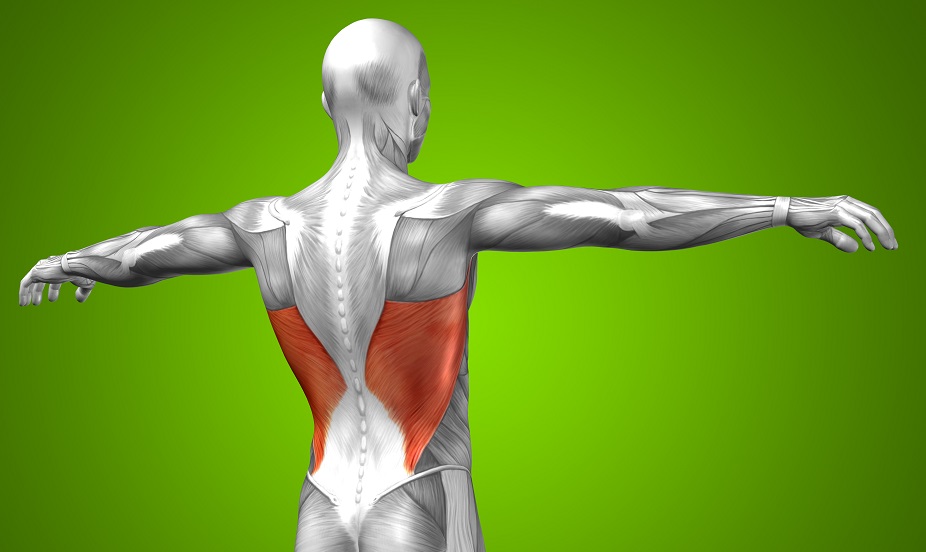
Latissimus Dorsi The Definitive Guide Biology Dictionary
The latissimus dorsi muscle is used the most during exercises that involve pulling and throwing. Pain is usually caused by overuse, using poor technique, or not warming up before exercising.

Latissimus dorsi pain Symptoms, causes, and exercises for relief
The latissimus dorsi is a broad, flat muscle occupying most of the lower posterior thorax. The muscle's primary function is to move the upper extremity, but it is also considered an accessory muscle of respiration. Due to this muscle's broad attachment to several vertebral spinous processes and the thoracolumbar fascia, ongoing research looks at what role the muscle plays in trunk movement.

Latissimus Dorsi Muscle The Swimmer's Muscle
Latissimus dorsi muscle (plural: latissimi dorsi muscles, and colloquially often shortened to the lats) is one of the muscles that attaches the upper limb to the vertebral column. Summary. origin spinous processes of T7-T12 vertebrae and thoracolumbar fascia; posterior third of the iliac crest; 9 th-12 th ribs; inferior angle of the scapula

The Latissimus Dorsi Muscle, Its Attachments and Actions
The latissimus dorsi are a pair of large muscles, one on either side of your middle to lower back. They work as a unit, so any movement you perform that relies on your lats will use the entire muscle. In other words, it's impossible to isolate your upper, lower, or mid lats, only the whole muscle. Latissimus Dorsi Exercises . Below you will.